Insightful newsletter of Drishtikone - Issue #94: 73rd Independence Day - Let us be Free!
Today is August 15th. India’s Independence Day.
Many years back when I was in school, I went up to my father and asked - “on August 14th, you all must have been so happy, right?”
He simply blasted me. “Several thousands were already dead and many were dying. Which idiot was happy?”, he replied.
We were sold stories to make us feel good. We were never told the facts.
Whenever I would think of partition, as a young kid with only NCERT books to go to, I could never fathom how could a few riots lead to a complete partition?
What was the trigger?
Political agreements or disagreements are never triggers. They are the backup narratives. What triggers such extreme madness is something else.
What was it?
We were never told.
What we needed was independence of ignorance, darkness and imperialism. Instead on Aug 15th in 1947, we moved from one imperialist power to another. One darkness to another.
Today, lets promise ourselves that we will be a full participant in the democracy that India is. This Independence Day - let us get rid ourselves of all ignorance and helplessness.
Let us be free. Really free.
“This is indeed India! The land of dreams and romance, of fabulous wealth and fabulous poverty, of splendour and rags, of palaces and hovels, of famine and pestilence, of genii and giants and Aladdin lamps, of tigers and elephants, the cobra and the jungle, the country of hundred nations and a hundred tongues, of a thousand religions and two million gods, cradle of the human race, birthplace of human speech, mother of history, grandmother of legend, great-grandmother of traditions, whose yesterday’s bear date with the modering antiquities for the rest of nations-the one sole country under the sun that is endowed with an imperishable interest for alien prince and alien peasant, for lettered and ignorant, wise and fool, rich and poor, bond and free, the one land that all men desire to see, and having seen once, by even a glimpse, would not give that glimpse for the shows of all the rest of the world combined.” - Mark Twain
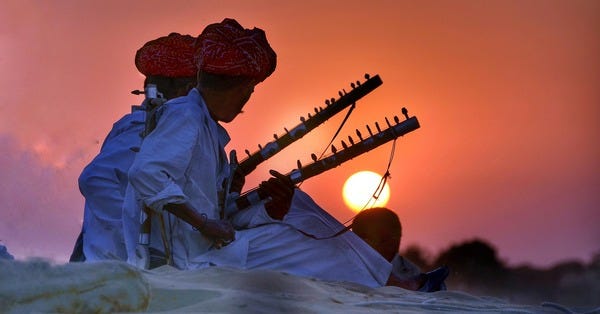
It was a time before the TV serials had started. My Nanaji, grandfather, who had seen the worst of the partition and was able to bring most of his family over to India would share some of those events and times.
I would sit with him usually to listen to the stories of that time, which he shared often reluctantly. The trauma had never really gone away.
One word got stuck in my mind however - balwayi (बलवई ). In Punjabi he would say “बलवई आये सी | (Balwayis had come)” At that time, I did not make much of that.
However, later this word was used in many stories on partition, where the sources were unrelated.
Buniyaad and Tamas characters referred to it as well. In fact, every discussion on partition had that one word - बलवई.
It basically means rioters or a mob.
When I later mulled on it, I found something extremely strange. And, this hit me when I had once went to stay in a Gujarati village and then in a Rajasthani village. The people there knew other folks from around 10-25 villages next to their own. That is how it works. These people have been there for centuries and everyone knows everyone else.
My grandfather lived in a village as well. They would feed the whole village during festivals. The characters in the serials also lived in the villages. And, as is the norm, they would know people from most of the nearby villages.
So who were the बलवई?
Who were these people whom my Nanaji or the writers of Buniyaad, Tamas and many other people I had talked to - did not recognize? Who were these strangers?
My question finally got answered when I came across a phrase that was removed from the NCERT books we were taught from.
The Direct Action Day.
It was on August 16, 1946 and the action started in Bihar and Bengal. Later repeated in Punjab.
Here is a picture from the evening before the Direct Action Day. Here the then Bengal Premier, Huseyn Shaheed Suhrawardy (right), is engrossed in a telephone conversation at his residence in Calcutta. Khawaja Nazimuddin, his predecessor, is seated next to him. Two years later, Khawaja Nazimuddin became Pakistan’s second governor-general and subsequently Pakistan’s second prime minister. (Source) Suhrawardy was known as the Butcher of Bengal. (Source)
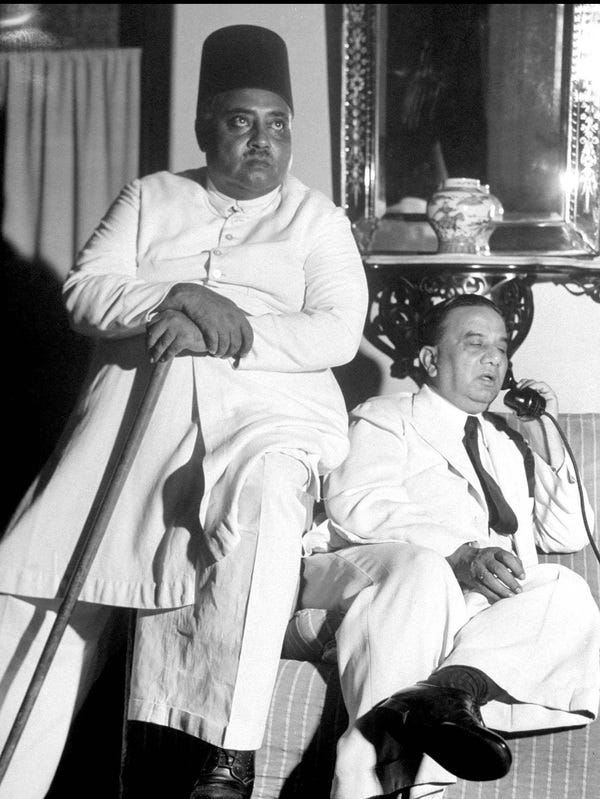
Why was August 16, 1946 selected as the “Direct Action Day”.
Jinnah chose 16 August deliberately for a reason. That day in 1946 was the eighteenth Day of Ramzan and the day was associated with the Battle of Badr which resulted in Prophet Mohammad’s first decisive victory over the heathens and the subsequent conquest of Mecca. The then Chief Minister of Kolkata and an important Muslim League leader Suhrawardy and his Muslim League colleagues delivered fiery speeches reminding Muslims of Bengal of the victory of Badr and exhorting on them to follow in the footsteps of the Prophet and wrest a victory for Islam on 16 August. (Source)
In fact, the writer has seen the announcement that was carried out in the Dawn newspaper (which was owned by Jinnah) for the call to Direct Action Day. The central narrative was to duplicate the “Battle of Badr”.
Most of the accounts, specifically so in Pakistan and the Indian “Secular” media - characterized the events called “Great Calcutta Killings” following the Direct Action Day on 1946 as “Hindu-Muslim riots”. Thus trying to say that it was done by both equally and drive home a false equivalence.
Nothing could be more farcical!
Let us look at the facts from that time itself.
Here is an extract of the official “Bengal Legislative Assembly Proceedings (1946) Vol.71, Pt.3.” (for download click on the link)
It explains clearly how the whole massacre was planned and started.
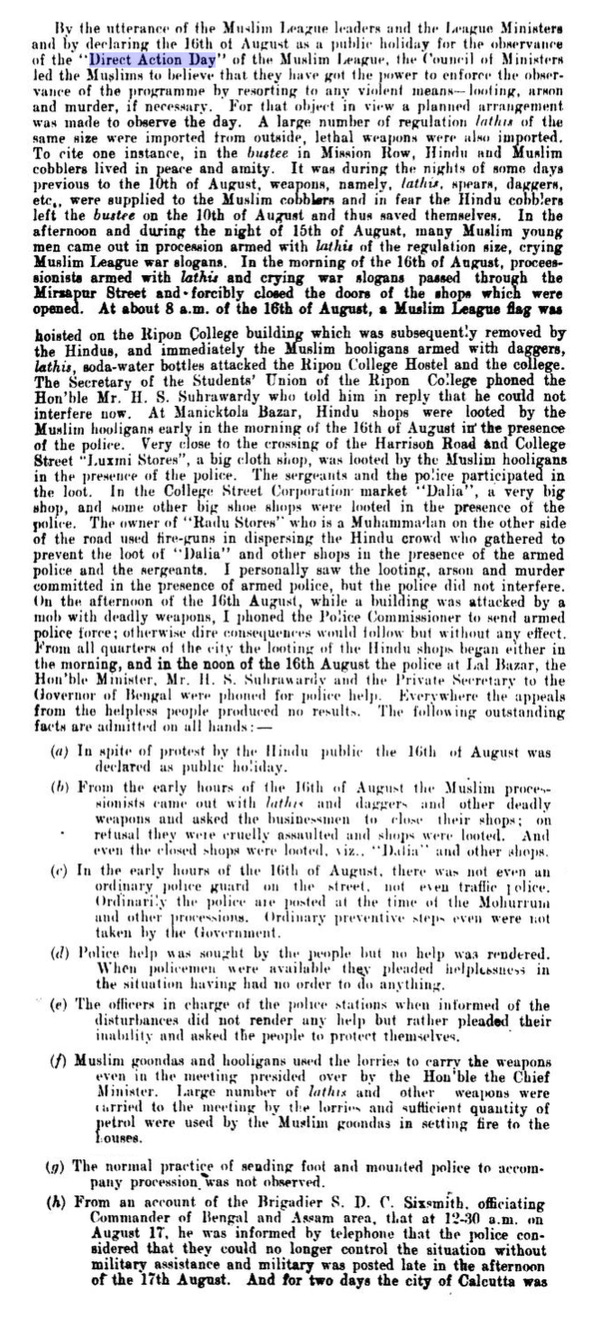
In fact, the legislative proceedings go on to show how the Muslim leadership worked to create obfuscation even when the evidence of who, how and why the massacres were started was very clear. Prior to the massacres on Direct Action Day, leaflets were distributed which clearly said what was going to be done.
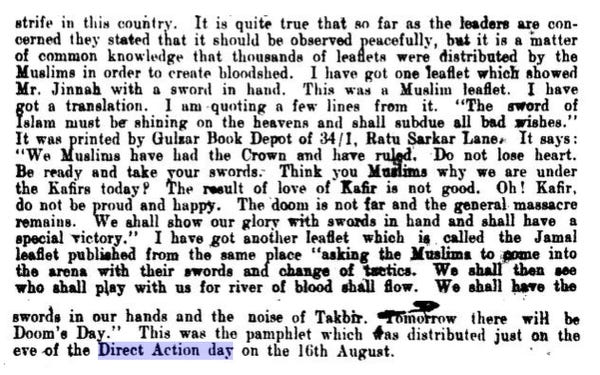
It was at this very time, that the real fight for Independence was taking shape (Source). The ships from docks in Gujarat to Calcutta were taken over by the Indian sailors because they had been inspired by the amazing stories of the INA soldiers under trial at the Red Fort in Delhi. The Royal Air Force did a fly past over Bombay, the Army barracks went empty as Indians, whom the British depended on to kill Indians were deserting them.
The mutiny started on 18 February 1946 and by next evening a Naval Central Strike Committee was formed where Leading Signalman M.S Khan and Petty Officer Telegraphist Madan Singh were unanimously elected President and Vice-President respectively. It happened spontaneously!
Perfect scenario of communal harmony - right?
But all the mainstream politicians – from Jinnah to Gandhi, to Nehru to Maulana Azad - let these people down.
Why would Gandhi not back these people who were doing the ultimate non-violence - of deserting their imperialist masters?
The answer to this came out in the Khosla Commission deposition by Shyamlal Jain.
Netaji could still inspire the entire nation like no one else - despite the machinations of Gandhi and Nehru.
And, he was alive!
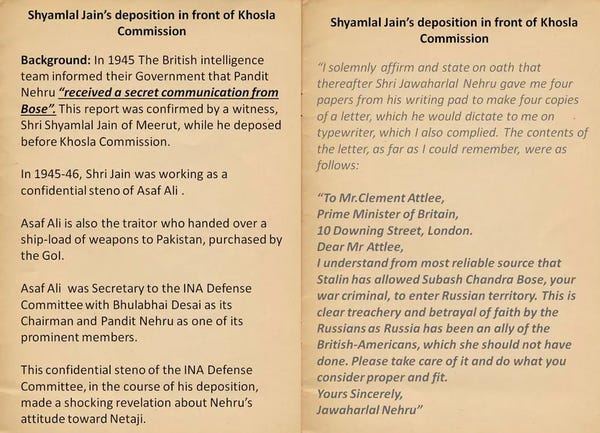
So afraid was the Congress establishment of Netaji and the Naval Mutiny that even in 1965, when Utpal Dutt did a play called Kallol in Calcutta (Congress ruled in Bengal at that time) he was arrested for that!
The main researcher on Netaji has been Anuj Dhar. You should read his books - “India’s Greatest Cover-up” and “Back from Dead”.
To get some quick information on this mystery read this post.
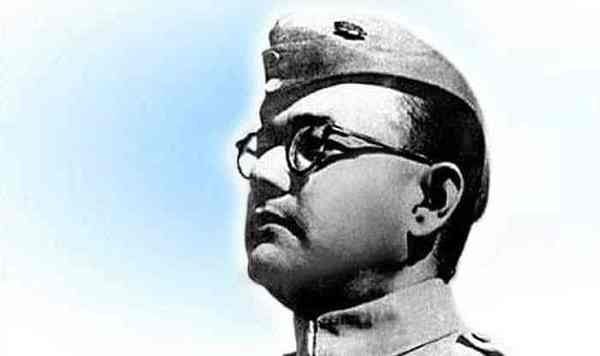
5 Reasons why Netaji Bose survived aircash and escaped to Russia - Drishtikone
When Netaji Subhash Chandra Bose went looking for help to fight against the British for independence as the Allies were locked in the World War II, he met Hitler. With Adam Von Trott, the translator and Hitler in the room with Bose, Hitler told Netaji that time for India’s Independence struggle wasn’t ripe yet.
questions on harris termed racist by US leftists
Given the interpretations and understanding of the law when she was born, was Kamala Harris a “natural-born” citizen? Questions from one law professor raise legitimate doubts. The American left media, like the Indian leftist media, is calling it “Racist”. Even asking basic questions in democracy is considered racist now.
The real crux of the argument from John Eastman is about ‘subject to its jurisdiction’. How one needs to be subject to the jurisdiction of the US laws.
in the Slaughterhouse Cases, the Court opined in dicta that “‘subject to its jurisdiction’ was intended to exclude from its operation children of ministers, consuls, and citizens or subjects of foreign States born within the United States.” (Source)
Admittedly, this will not derail her VP bid or even her Senate seat, even when given her status it may have been unlawful. However, in a democracy, it is important that one questions and has a discussion. Something that the leftist media does not even allow.
Was Kamala Harris an Anchor Baby? - Drishtikone
Kamala Harris is the new pick of Democratic ticket as the VP nominee. She is an interesting woman. Her mother was a Tamilian Hindu from India, while her father was a black Christian from Jamaica. Her father, Donald Harris, did not really raise her. It was her mother who raised her.
nota bene
Guests in Rashtrapati Bhawan: A man who ferries wood for funeral pyres, sanitation workers who have worked back-to-back shifts at Delhi’s government hospitals, police personnel, security guards, and about 20 medical professionals from doctors to nursing staff and ASHA workers involved in India’s fight against Covid will be among the special guests at President Ram Nath Kovind’s Independence Day ‘At Home’ function this August 15. (Source)
From India to Lebanon with Love: India on Friday sent 58 tonnes of emergency humanitarian aid to Lebanon in an air force plane to assist the people affected by the explosions in Beirut on August 4. The explosions had destroyed the large granaries there as well. (Source)
Glaciers gone beyond return: Scientists studied data on 234 glaciers across the Arctic territory spanning 34 years through 2018 and found that annual snowfall was no longer enough to replenish glaciers of the snow and ice being lost to summertime melting. That melting is already causing global seas to rise about a millimeter on average per year. If all of Greenland’s ice goes, the water released would push sea levels up by an average of 6 meters — enough to swamp many coastal cities around the world. This process, however, would take decades. (Source)
US catches Iranian Oil tankers: The U.S. has seized Iranian petroleum bound for Venezuela aboard four tankers near the Strait of Hormuz, enforcing a forfeiture order aimed at both Iran’s Islamic Revolutionary Guard Corps and the Caracas government, the Justice Department announced Friday. Roughly 1.116 million barrels of fuel was confiscated from the foreign-flagged vessels M/T Bella, M/T Bering, M/T Pandi and M/T Luna, a Justice Department statement said, adding that the seizure took place “with the assistance of foreign partners.” (Source)
listening to the youth of the 60s - karwan guzar gaya
For one who had a special love for Hindi poetry, my all time favorite poets were Bharatendu Harishchandra, Suryakant Tripathi “Nirala” and Gopaldas Neeraj.
In one interesting interview on Doordarshan, Neeraj shared an incident from his life that remained with me ever since.
Once he was walking in a village and he turned the corner. As he turned, he bumped into an old woman. He was very apologetic. So, he said sorry and touched her feet.
The woman, without saying a word, walked into the nearby house. As she walked into that house, a loud wailing sound started. Startled, he walked into the house and came to know that someone had died right then. He looked for that old lady but could not find her. No one in the house had seen her either.
He smiled and said - “Maybe, I had touched the feet of death that day.” A great poet and a very sensitive human being - that was Neeraj.
This song is from the movie Nai Umar ki Nai Fasal. It was released in 1966. A true Hindi poetry, it depicts the frustration and betrayal of the youth at that time so beautifully. Story is of a young man and his friends who are betrayed by politicians.
This was when Lal Bahadur Shastri had been the PM. It shows that by the time Nehru’s time had ended - the promise and idealism of “Aao bachon tumhein dikhayen” had turned into frustration of the youth.
And, it just never ended. Until recently.
Let us listen to this masterpiece of a song!
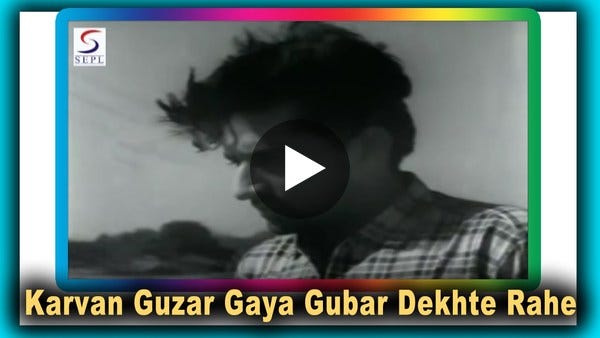
Karvan Guzar Gaya Gubar Dekhte Rahe | Mohammed Rafi | Nai Umar Ki Nai Fasal @ Tanuja


